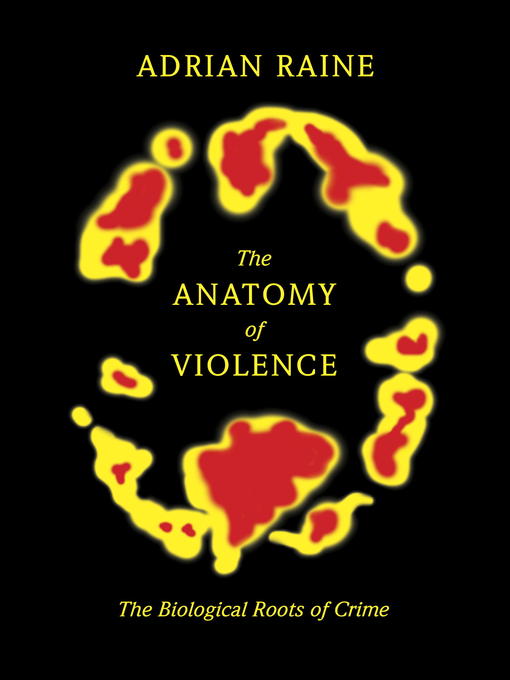
The Anatomy of Violence
The Biological Roots of Crime
کتاب های مرتبط
- اطلاعات
- نقد و بررسی
- دیدگاه کاربران
نقد و بررسی

Starred review from February 25, 2013
Neurocriminologist Raine is known for pioneering studies gauging long-term effects of environmental factors on neurological development. In his latest (after Psychopathology of Crime), the University of Pennsylvania professor explains how a startling number of early incidents can retard the development of the prefrontal cortex and other neural sites of learning, focus, and emotion, resulting in violence-prone adults. Indeed, from fetuses malnourished in the womb to children “ushered into the vestibule of violence before they could even sit up on their own,” to adults living near the Twin Towers on 9/11 (brain scans made three years later “showed a reduction in hippocampal gray-matter volumes”), no one is immune. However, Raine insists that drugs, cognitive behavioral therapy, mindfulness training, exercise, and periods of “environmental enrichment”—like educating mothers about kids’ emotional, educational, and nutritional needs—can mitigate damage, and perhaps stave off violent tendencies down the road. Ultimately, Raine is optimistic: “We can use a set of biosocial keys to unlock the cause of crime—and set free those who are trapped by their biology.” Though sometimes dense, this is a passionately argued, well-written, and fascinating take on the biology of violence and its legal and ethical implications. 8-page color insert, b&w photos throughout. Agent: Eric Lupfer, William Morris Endeavor.

March 15, 2013
Neurocriminologist Raine (Criminology, Psychiatry and Psychology/Univ. of Pennsylvania; Crime and Schizophrenia, 2006, etc.) asserts that "revolutionary advances into brain imaging are opening a new window in the biological basis of crime." The author emphasizes the importance of biology, along with environment, in shaping the individual. He reprises genetic evidence of a predisposition to criminal behavior and the identification of polymorphisms of genes controlling enzymes that regulate neurotransmitters such as serotonin and dopamine. Brain scans and autopsies show physiological differences in the structure of different regions of the brain, possible effects of brain damage incurred during birth or before as a result of the environment within the womb or from subsequent child abuse. These correlate with a history of violence and different criminal behaviors, making it possible to differentiate the brains of impulsive killers from those of serial killers. Studies of psychopaths show dampened activity in the amygdala, the part of the brain that normally alerts us to danger, and signs of stress, such as perspiring, are absent. Individuals with this psychophysiology are not primarily motivated by risk avoidance but by the rewards. "Different biological, psychological, and social risk factors can interact in shaping either violence or self-sacrificing heroism," writes the author, who makes the controversial conclusion that despite considerations of civil liberties, as neurocriminology develops over the next few decades, preventative incarceration will become an increasingly attractive option. Underlying Raine's presentation is his stated conviction that socially ameliorative measures in dealing with a rising tide of crime will prove ineffective. While Raine explicitly rules out any notion that biology is destiny, and the implication that criminologists such as himself are modern-day eugenicists, his questionable political conclusions are sure to be controversial, especially in the context of the current debate on guns and the prevention of violence.
COPYRIGHT(2013) Kirkus Reviews, ALL RIGHTS RESERVED.

September 1, 2012
Research by University of Pennsylvania criminologist Raine shows that impairment to the regions of the brain governing decision-making or feelings like empathy can lead to increased criminal behavior. The implications are far-reaching and controversial.
Copyright 2012 Library Journal, LLC Used with permission.

March 1, 2013
Once reviled because of its ties to eugenics, the idea that criminal impulses are rooted in biology has been reinvigorated by the Human Genome Project. Criminologist Raine applauds a growing cross-disciplinary approach and the growth of neurocriminology that looks at the biological and social factors behind criminal behavior, but his focus is firmly on the biological. Raine explores famous criminal cases, from Ted Bundy to the Unabomber to more obscure figures, and offers compelling research, including brain scans of psychopaths, schizophrenics, and others, to demonstrate the hard science behind some criminal and antisocial behavior from domestic violence to murder. Raine also analyzes research on adoption and twins to study the different impacts of nature versus nurture, as well as environmental factors that affect brain development, including nutrition, smoking, and drug abuse. Finally, Raine explores the practical implications of neurocriminology on the legal system, public health issues, and the future treatment of criminal and antisocial behavior. Although the topic will certainly continue to provoke controversy, Raine offers a highly accessible look at the latest research on the biology behind criminal behavior.(Reprinted with permission of Booklist, copyright 2013, American Library Association.)

























دیدگاه کاربران